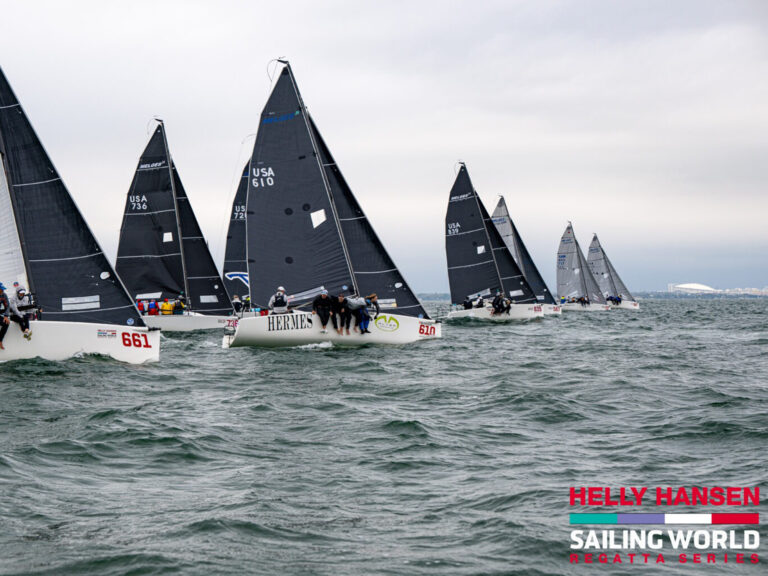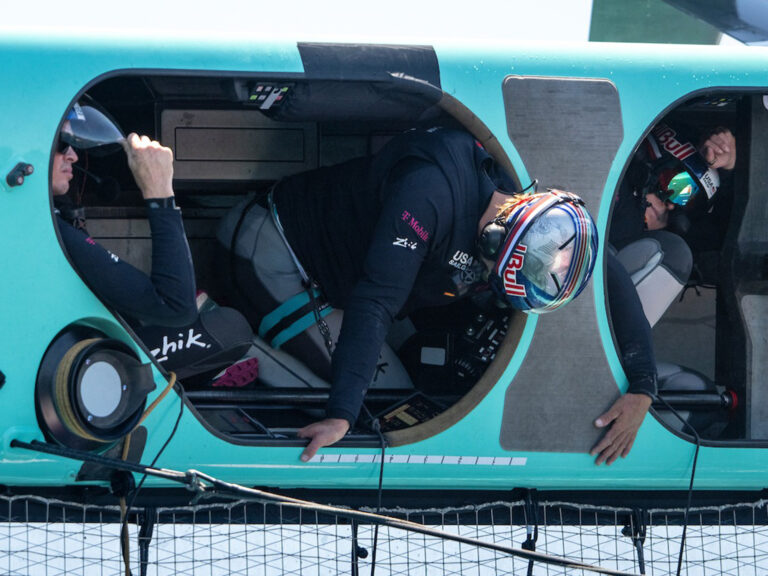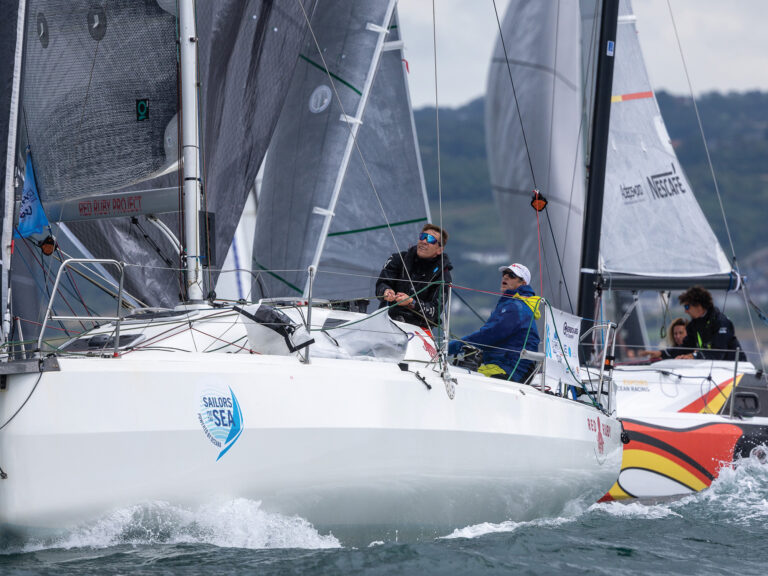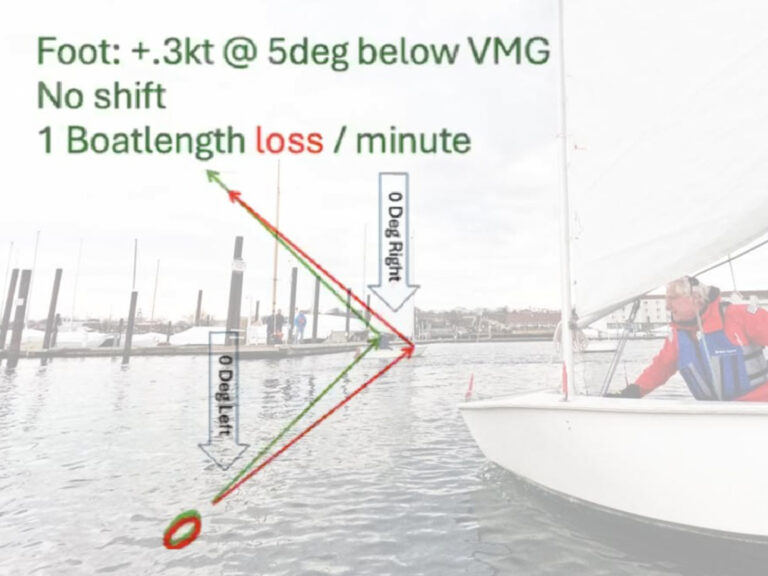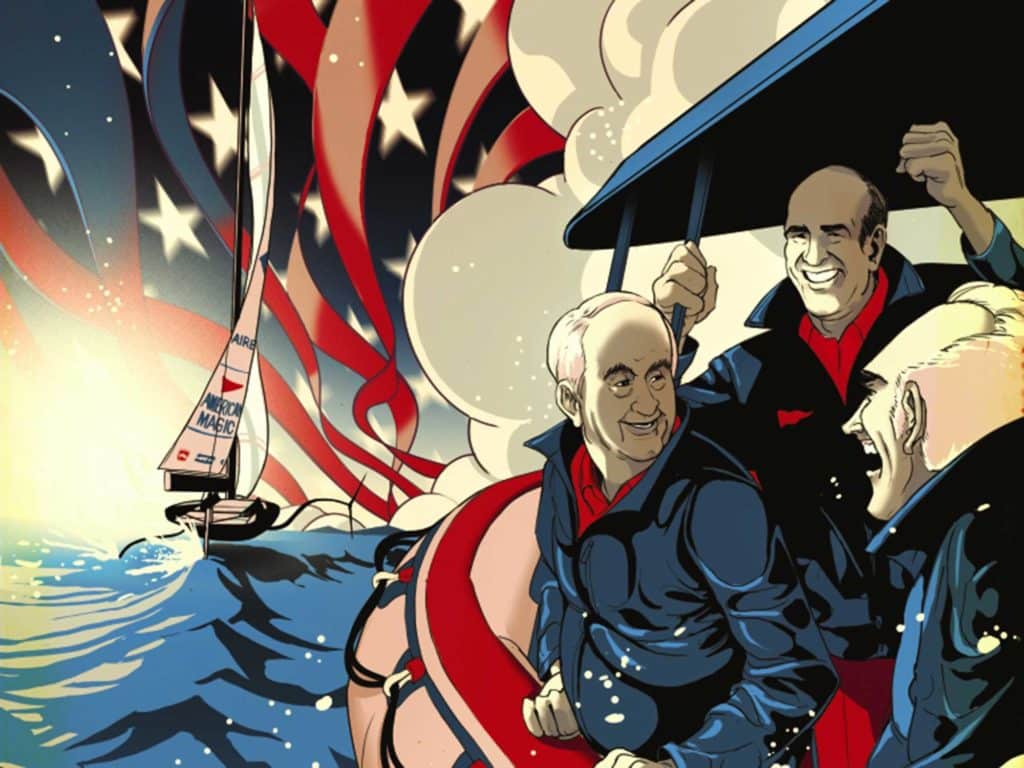
In the interest of full disclosure, let me start by saying that I sincerely hope the New York YC’s American Magic challenge returns triumphant from New Zealand come March 2021. Having expressed my wishful thinking, however, I do have some thoughts connecting the past with the forthcoming 36th America’s Cup.
Since 1987, the last three times the New York YC fielded challenging teams, the club was unable to reach the semifinal races. When Larry Ellison’s BMW Oracle Racing successfully challenged in 2010 (the lopsided Deed of Gift match against Alinghi, sailing under the burgee of the Golden Gate YC) with the big trimaran USA-17, no other American teams were invited to compete. The New York YC had to wait until the Cup left our shores before making another challenge. In 2017, that opportunity became available when Emirates Team New Zealand handily defeated Oracle Team USA in a 7-to-1 regatta in Bermuda.
A nascent new syndicate, led by Cup veteran and New York YC member Terry Hutchinson, with financial and managerial backing by club members John J. “Hap” Fauth and Doug DeVos, launched their effort soon after the races concluded in Bermuda. A few months later, auto-racing leader Roger Penske joined the syndicate. It should be noted that the DeVos family owns the NBA’s Orlando Magic. There’s certainly a connection by name between the two teams.
The group got off to a fast start by recruiting a deep international team of designers, sailors, builders and managers, and then asked the New York YC if they could challenge on the club’s behalf. It had been nearly 40 years since the club last won the America’s Cup, and its board of trustees eagerly signed on with the team. For many members, the America’s Cup is a new experience because 50 percent of the current 3,200-person membership joined after the club’s last challenge in 2003. Less than 10 percent of the membership were members during their last victory in 1980.
The old expression “there is no second” still holds true 170 years after Queen Victoria was reportedly given that answer when, in 1851, she asked who was second when the schooner America was about to cross the finish line after racing around the Isle of Wight. As most readers know—and it bears repeating—the America’s Cup is a winner-take-all contest. The victor takes the trophy and the event to their home waters. For American Magic and the New York YC, that would mean bringing the regatta back to Newport, Rhode Island, where it was contested for decades.
When Dennis Conner lost the Cup to Australia in September 1983, I wondered at the time if we would ever see it sail again on Rhode Island Sound. This might be the club’s best chance to make that happen. The first ingredient to a successful campaign is building adequate funding for a three-year effort. To date, American Magic has raised an estimated $130 million. INEOS Team UK is said to have more than enough in its budget. The Italian Challenger of Record, Luna Rossa Prada Pirelli Team, has less funding compared with the Americans and the British, I’m told. Curiously, the Defender, Emirates Team New Zealand, appears to have considerably less funds available than all three challengers, but they have proved resourceful in the past—and remember, they’re racing on their home waters.
The challenger fleet is small, and while it’s disappointing to the hosts to have so few teams, it should be expected given the enormous costs to develop the new foiling monohull, sustain a three-year campaign, and then compete in distant venues. If the America’s Cup is to thrive in the future, the astronomical cost of competing has to be drastically reduced.
We have witnessed, however, that having more money does not guarantee a win. And that’s because so many factors contribute to a successful campaign: a strong sailing team, a fast boat, a well-managed operation and, yes, a little luck certainly helps. I have watched many Cup races that could easily have had a different result if not for a wind shift or boathandling error. The unpredictability is what makes watching the America’s Cup so intriguing, both on and off the water.
This is the seventh time, since 1958, that a new class of boat will be used for the Cup Match. The modern progression has been fascinating to witness, starting with the 51-year-old 12 Metre design in 1958, Conner’s Deed of Gift catamaran against the New Zealander’s 120-foot sloop, then the 82-foot IACC sloops, Alinghi’s big catamaran versus Oracle’s gigantic trimaran, large then small foiling catamarans with the AC72 and AC50s, and now 75-foot foiling monohulls. That’s quite a variety of vessels. Creating a new America’s Cup class boat is an expensive and intellectual challenge for every team. Today, the design and technical teams are robust and include naval architects, engineers, composite-boat builders, aeronautical engineers and all sorts of specialists. In all, more than 140 people are part of the American Magic team, and only a tiny fraction of those are actually sailors on the boat.
The first task for an America’s Cup technical team is to ensure that the boat stays together in one piece. While syndicates rarely reveal equipment breakages or setbacks, there have been many incidents for all four teams as they’ve pushed their unknown boats to unfamiliar limits. Each team has capsized during testing, which makes for dramatic video, but I’m sure it keeps the sailors up at night thinking about how hard they should be pushing these speedy foiling machines. Fortunately, and as intended by the rule, quick capsize recovery is a reality.
At this writing, second-generation AC75s seem to be holding together better than first-generation boats, and that’s to be expected as they push the limits early and ahead of any actual racing.
American Magic enlisted the Spanish naval-architecture firm of Marcelino Botin to lead its design group. Botin designed Fauth’s maxi Bella Mente, worked with Team Zealand during the 2007 America’s Cup, has designed successful Volvo Ocean Race yachts, as well as groundbreaking TP52s for DeVos’ Quantum Racing Team. Aerospace company Airbus is an American Magic partner working closely with the design team, particularly on foil design.
The British challenger, whose sailing team is led by Sir Ben Ainslie, has a veteran design team and is consulting with Mercedes F1 Applied Science. Reports indicate that their first AC75 design was a disappointment, but their second boat is showing impressive speed during its trials off Auckland in October. The boat features a long skeg (or bustle) being used as an endplate between the hull and the water to generate more speed. America’s Cup veteran Grant Simmer is INEOS Team UK’s CEO, and he brings a successful track record that includes serving as a crew aboard Australia II in 1983, overseeing two winning Alinghi campaigns in 2003 and 2007, and managing the successful Oracle campaigns in 2010 and 2013. Ainslie took over as tactician during Oracle’s amazing comeback in San Francisco in 2013, and has four Olympic gold medals and one silver medal in his keep.
The Italian challenger, Luna Rossa Prada Pirelli Team, is led by Max Sirena, who is on his seventh Cup campaign and was a member of New Zealand’s winning team in 2017, along with two-time Cup-winning helmsman, James Spithill.
RELATED: Luna Rossa’s America’s Challenge Shoots for the Moon
Emirates Team New Zealand has the double responsibility of hosting the Cup and fielding a defense. It is a daunting task, laden with many distractions. Based on the success of hosting the Cup in 2000 and 2003, however, New Zealand will no doubt run an exceptional regatta and most certainly field a strong sailing team. Grant Dalton returns as CEO, and it’s worth noting that all of his America’s Cup teams have reached the Cup final. The New Zealand sailing team includes Olympic gold medalists Peter Burling and Blair Tuke, along with ace wing trimmer Glenn Ashby. They will be a hard squad to beat.
America’s Cup history is a helpful guide when trying to figure out which team might prevail. Since Australia defeated the New York YC in 1983, the Challenger of Record has prevailed in five of the last 10 America’s Cups. In 1995, the winning challenger was able to successfully defend one time (2000) and then lost the Cup in 2003. Alinghi won its challenge in 2003 and successfully defended in 2007, only to lose in 2010. Continuing with this trend, an American syndicate won in 2010, defended in 2013, and lost in 2017. If one were to believe statistical patterns, New Zealand would defend in 2021 and then lose the following match. It makes for a nifty theory, but trends don’t always hold water.
With all this in mind, is it feasible for the New York YC to bring the America’s Cup to its shoreline again? Well, there are several things to watch during the Prada Cup Challenger Series and the 36th America’s Cup Match presented by Prada. Will one boat start off sailing faster than the others? Will the other teams be able to improve their boat’s speed over the course of the trials? Will we see crews being rotated off the starting roster? Will New Zealand be able to trial-race against the challengers?
The challengers will want to check in without giving away too much information about their speed. It is a tricky balance. The challengers have a big advantage by being able to race against each other and advance their performance and sailing capability. This is one of the most important advantages the challengers have. New Zealand will have to rely on in-house competition (and simulation) to improve.
American Magic was lucky to have avoided shipping its yacht to Europe for canceled America’s Cup World Series events in early 2020. Emirates Team New Zealand lost considerable time because its first AC75 was stuck on a ship for months. The canceled regattas forced teams to base their design evolution with computer modeling and limited on-the-water testing. Hutchinson says their computer prediction models are remarkably close to what they are now seeing on the water in Auckland.
New Zealand has also been forced to deal with endless legal movements by the Challenger of Record. It is questionable whether these are legitimate complaints or an attempt to distract the Defender, but most of these issues are resolved by an appointed arbitration panel. American Magic and INEOS Team UK have been able to steer clear of any legal brouhahas and have instead focused on their sailing.
Usually a new design creates a wide gap in performance between the boats. The ability to accurately record performance on the water is highly sophisticated today, so I presume each team will have a good idea about the speed of their competitors too. I am going to make a bold prediction that the speeds of all four boats will be relatively close. The real difference will be in how they adapt and improve as the competition progresses.
I presume each team will have a good idea about the speed of their competitors. All four boats will be relatively close. The real difference will be in how they adapt and improve as the competition progresses.
I added up the ages of the winning America’s Cup helmsmen between 1958 and 2017, and found that 42 was the average age. This America’s Cup features three helmsmen in their 40s and one in his 20s. At this writing, Burling is 29, Spithill is 41, Ainslie is 43, and Barker is 47. Historically they are all in their prime America’s Cup years, but I suspect the younger Burling will have an advantage as Bermuda’s winning helmsman. He’s incredibly smart, fast and fearless.
Hutchinson, by the way, is 52 and is the oldest sailor competing aboard any of the boats in New Zealand. He has spent his entire adult life as a professional sailor. He was a two-time College Sailor of the Year at Old Dominion and has been a skipper, tactician or sail trimmer in a wide variety of campaigns. His list of victories is impressive, including world-championship wins in the J/24, Farr 40 and TP52 classes, as well as considerable time racing in the America’s Cup.
Hutchinson was a trimmer with Paul Cayard’s AmericaOne campaign in 2000, and tactician with Stars & Stripes in 2003. Notably, he served as the tactician for Team New Zealand in 2007. That crew made the final round against Alinghi and gave the Swiss a good fight before losing 5-to-2 in a series of nail-biting races. More important, for the 2000 America’s Cup, Hutchinson was inside the New Zealand camp and learned how they operate.
Barker, from New Zealand, is Hutchinson’s helmsman for one obvious reason: experience under pressure. Barker was the backup helmsman for Team New Zealand in 2000 and even steered the final race. Since then, he has competed in the Olympic Games (Finn 2004), reached the Cup final two times and, like Hutchinson, has been racing nonstop for nearly four decades.
There is a long history of winning America’s Cup sailors who endured losing before they ultimately won. Some names that come to mind include Ted Hood, Bus Mosbacher, Ted Turner, Ed Baird, Australian John Bertrand, Buddy Melges and Spithill. Hutchinson and Barker are poised to follow in the footsteps of these America’s Cup Hall of Famers.
Emirates Team New Zealand has to be considered the favorite because they are racing on their home waters, and have demonstrated their ability to create a fast package and a resilient, tightknit squad in Bermuda. Defending the Cup, with the added responsibility of hosting, is never easy, as several Defenders have learned in recent years. As I stated at the outset, however, I’m hopeful for an American Magic victory. The team has the sailing talent, the design-team expertise, and the funding and management skills to bring the America’s Cup back to the United States. Newport and all American sailors, young and old, await the results with bated breath.





